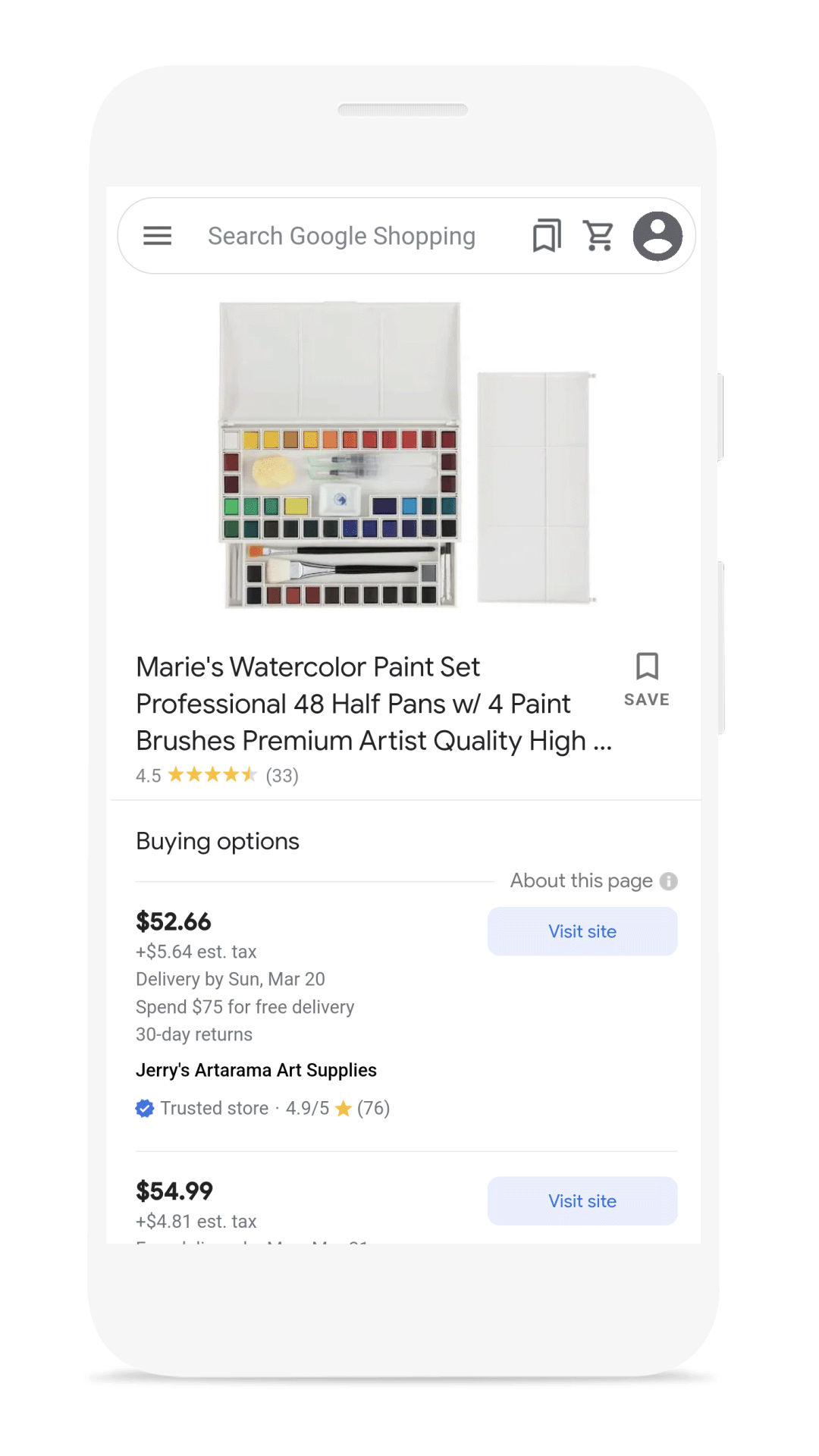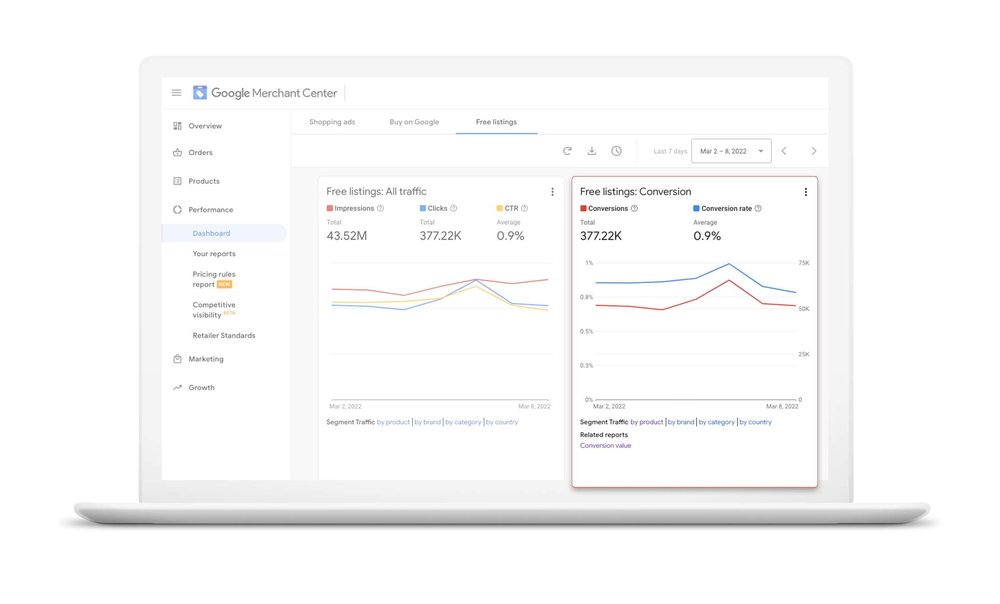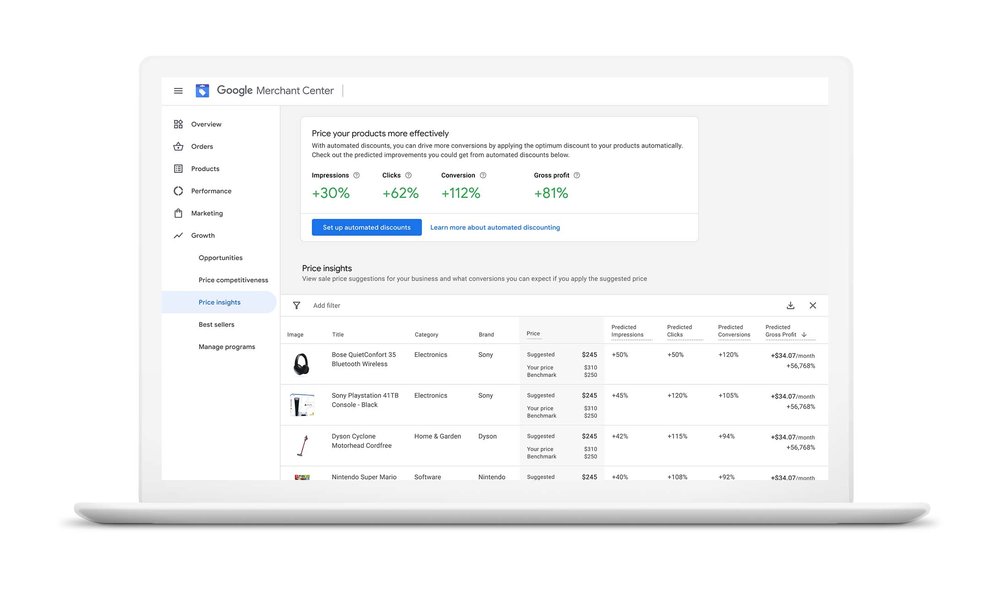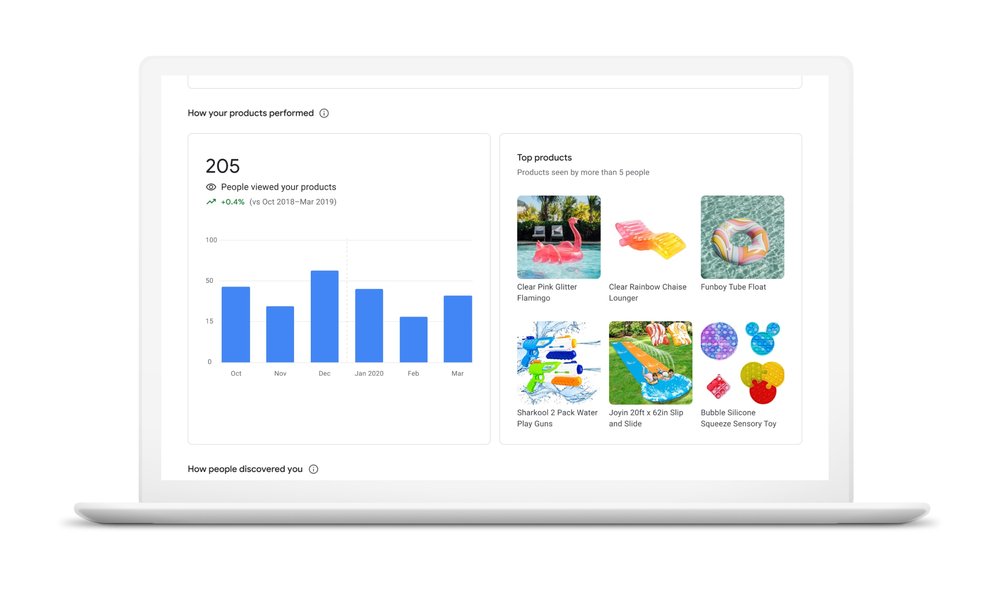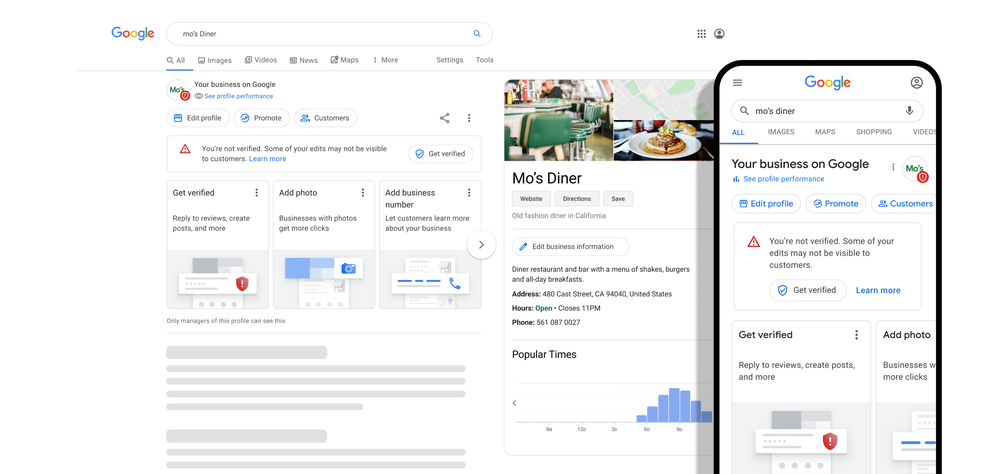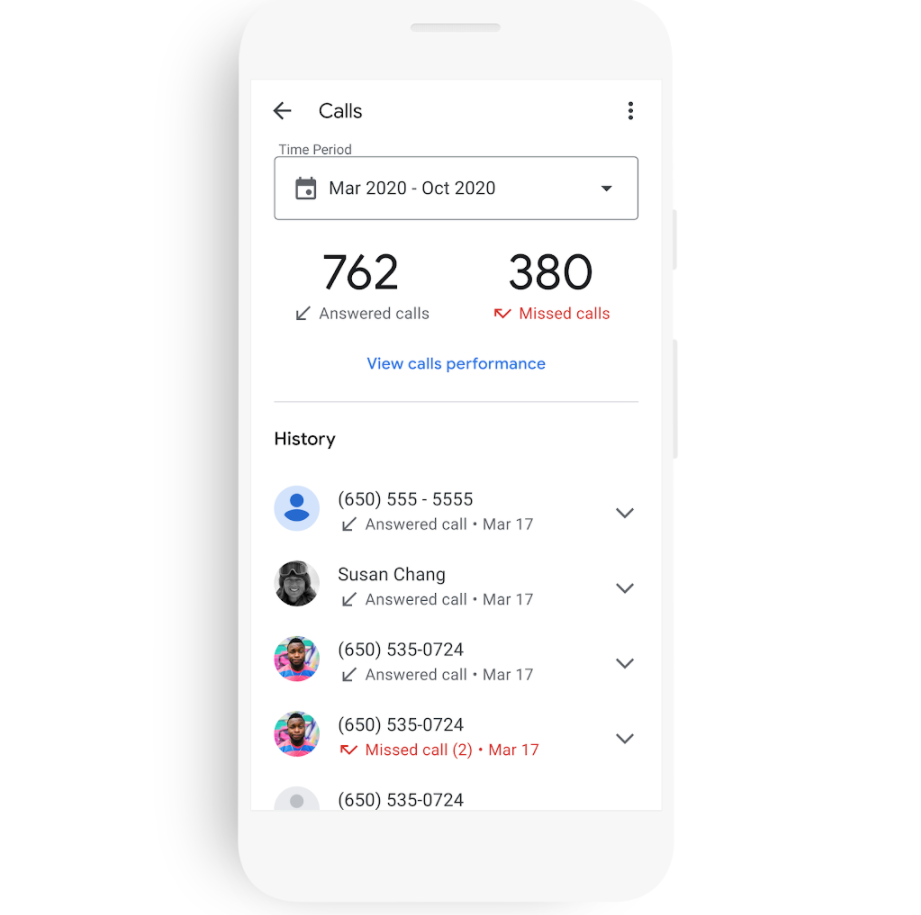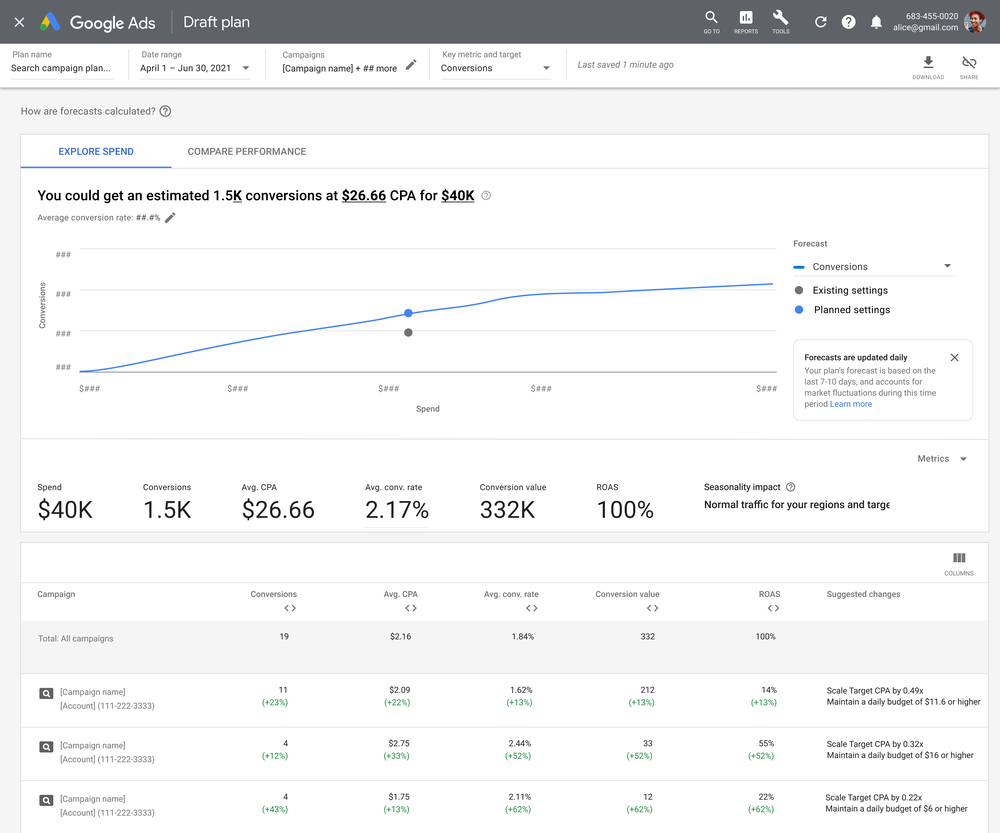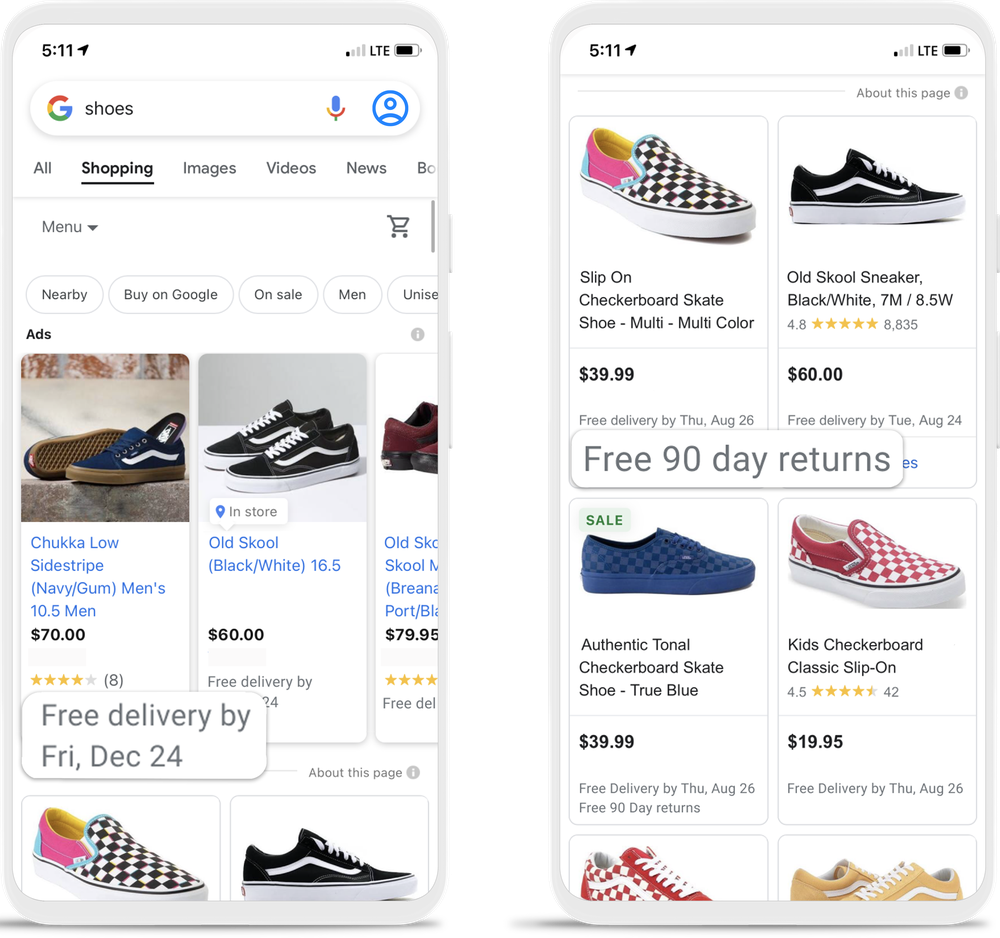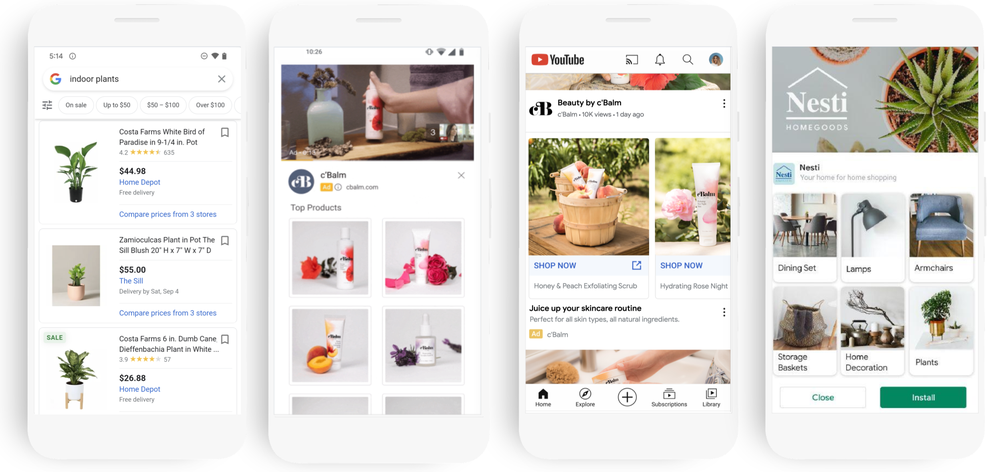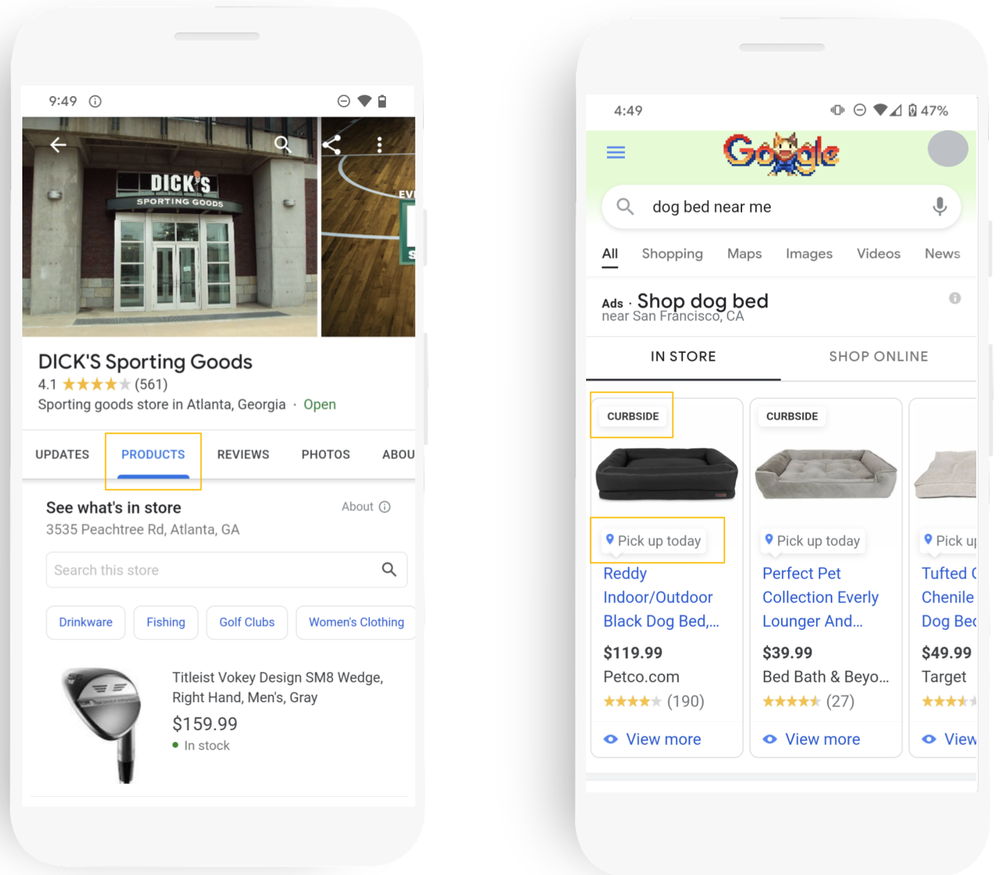3. Connect with shoppers in the physical world
Shoppers don’t just turn to Google for things they want to buy on the web; they also use Google to find what they need nearby. For example, searches for "open now near me" have grown globally by more than 200% year over year.4 In the U.S., searches for “local gift shops near me” have increased 440% in just the past month as people switch between online and offline shopping — more than ever before. If your physical stores are open for in-store shopping, it's crucial to make sure your customers can easily find you online.
Start by building your digital storefront, so shoppers can find information about your nearby stores and the products you have available in them. Keep your Business Profile up to date to ensure customers see accurate business hours, in-store services and safety measures. Help customers feel more confident in their in-store shopping trips by listing your local products for free on Google, or promoting those available for in-store pickup or curbside pickup using local inventory ads.
If you have store-specific goals, like in-store promotions or location reopenings, you can promote your stores to local shoppers using Local campaigns. Easily connect with holiday shoppers searching for businesses like yours on Google Maps, Search, YouTube and the Google Display Network and help them find what they need at your local store.
Many of your customers alternate between shopping online and in-store depending on their comfort level and community guidelines. Google offers a variety of ways to measure the impact that your online ads have on your physical store, including store visits and store sales measurement. You can then act on this data by adding it to your Smart Bidding to grow total sales, whether they happen online or offline.
 At GML we’re announcing new generative AI tools that help merchants market their brand and products more efficiently.
At GML we’re announcing new generative AI tools that help merchants market their brand and products more efficiently.
 At GML we’re announcing new generative AI tools that help merchants market their brand and products more efficiently.
At GML we’re announcing new generative AI tools that help merchants market their brand and products more efficiently.
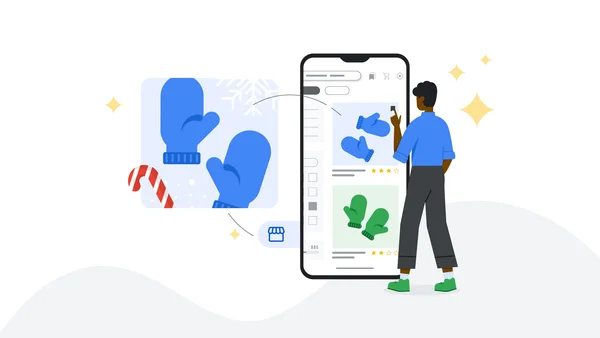 We’re introducing new features for merchants, including a small business attribute and expanded business information on Search.
We’re introducing new features for merchants, including a small business attribute and expanded business information on Search.
 Businesses can use AI to stand out with shoppers and lighten their workload this holiday season.
Businesses can use AI to stand out with shoppers and lighten their workload this holiday season.
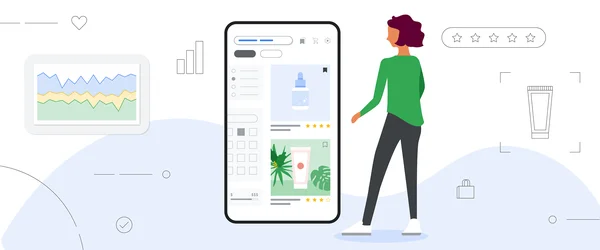 Merchants can use Product Studio to create product imagery with generative AI and easily list their products on the new Merchant Center Next.
Merchants can use Product Studio to create product imagery with generative AI and easily list their products on the new Merchant Center Next.
